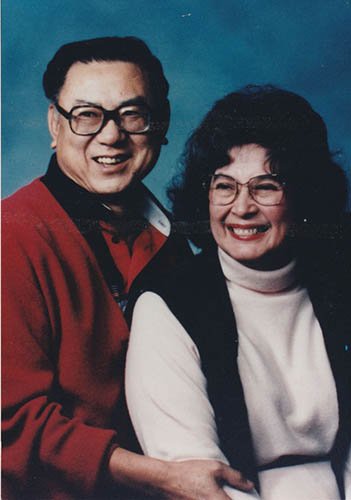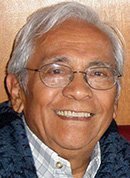Bridge Generation’s Lois Fleming, Seattle Civil Rights Champion
/At the 1994 National Conference of the Filipino American National Historical Society, members of the Bridge Generation (BG) were defined as: “Children born in America by the end of 1945 to at least one Filipino parent who immigrated to the United States during the early 1900s.” For years, author Peter Jamero has profiled a member of the Bridge Generation in his monthly blog – “Peter’s Pinoy Patter.” As part of a recurring series, PF is pleased to repost his profile of a Bridge Generation Filipino/a American.
Lois Fleming
To understand her passion for fairness, one must look to her childhood. Born on August 5, 1934 in Seattle, Lois was the eldest of two daughters (a younger sister died at 7) of Juan Faustino Balaoro from Abra Province, Philippines and Oregon native Ruth Potter, of German-Irish ancestry. As victims of anti-miscegenation laws and discrimination while also enduring the Great Depression, the young family underwent difficult times.
As early as age six Lois remembered the family repeatedly being refused housing, her mother receiving uncomplimentary remarks for marrying a Filipino, and her father encountering problems finding employment and being called racist names. Lois may not have clearly understood the reasons for the hatred; but inherently, she knew it was wrong. The family's economic fortunes improved when they moved from Bellevue Washington, where her father worked as a houseboy, across Lake Washington to Seattle where he found steady employment painting buildings and houses.
During Lois' early years, her parents expected her to return home from school promptly -- no lingering with neighborhood children. A dutiful daughter as a teenager, she didn't date. However, her parents encouraged a friendship with a mestizo, Victor Fleming, to whom she became engaged at sixteen. (Her marriage after graduating from Seattle University, resulting in three children, ended in divorce.) Like other Filipino youth of the times, she worked during summer vacations picking strawberries and green beans before finding less back-breaking work in fish canneries on Seattle's waterfront. During her college years, she worked in a laundry and as a page at the Seattle Public Library.
While the nation was engaged in the fight for civil rights during the 1960s, Seattle's ethnic minorities, led by African Americans, were fighting for open housing. Strongly committed to civil rights, Lois participated in numerous demonstrations along with other persons of color, including Filipinos such as community leader Vic Bacho and activist Bob Santos. In 1963, the City of Seattle enacted an ordinance (1) outlawing discrimination in housing and (2) establishing a Human Rights Commission. Under its new director, Phil Hayasaka, the HRC introduced non-discriminatory employment clauses in the city's public works contracts, initiated a six-week course on racial discrimination for supervisors, and convinced the mayor to issue an Executive Order on fair practices. These accomplishments were achieved despite years of delay to fully implement the controversial ordinance because an affirmative vote of the people was required for passage. Finally, in 1969, in the wake of Martin Luther King Jr.'s 1998 assassination, the ordinance (which also upgraded HRC to a City of Seattle department) was fully implemented.
Lois Fleming and Phil Hayasaka
Employment for college graduates was limited during the 1960s, particularly for female persons of color. Lois found work as a secretary with the newly-established HRC and was later promoted to Public Information Officer when the commission became a department. While the PIO position had a clear mission, it did not have the tools to operate effectively. Lois immediately developed a series of informational brochures describing issues facing Seattle's Asian, Native American and Chicano communities. At the same time, Seattle's school district, colleges and universities and the private sector were experiencing their own civil rights issues. The brochures were quickly gobbled up. Lois became in demand as a speaker. She wrote a regular column "Minority Voices" in the Seattle Post-Intelligencer, the morning daily newspaper. Her success as PIO subsequently led to greater responsibilities as department Contract Compliance Officer and Affirmative Action Specialist.
During the 1960s the Asian community was also beginning to assert itself. With the founding of the Asian Coalition for Equality (ACE), Lois again found herself playing a prominent civil rights role, along with Filipino Americans Tony Ogilvie and Sonny Tangalin. With Lois as lead person, ACE helped bring reforms to Seattle's Minority Contracting Opportunities Program. Tony led the effort that established the Special Education Program at the University of Washington. Sonny was at the forefront that brought an end to discriminatory practices of social clubs like the Elks. Lois' association with ACE subsequently led to years of employment with Washington State government assuring civil rights protections for the Asian community. Her employment with the state began in 1972 with her appointment by Governor Dan Evans to the Asian American Advisory Council. She rose to become Chairperson, then Executive Director, of the Washington State Asian American Commission, precursor to today's Washington State Commission on Asian Pacific American Affairs. In recognition of her many contributions to civil rights, she received an Outstanding Achievers Award from the Filipino Youth Activities in 1985.
A civil rights march in Seattle (1963) (Source: Seattle Now & Then | Photo by John Vallentyne)
Lois and her husband and civil rights activist partner, Phil Hayasaka, retired from full-time employment in 1988. Phil passed away in September 2020. Today, Lois lives independently and focuses on exercise, reading and activities with her grandchildren. In looking back at her life, she is "grateful for the many blessings I have, and of the wonderful years I had with Phil -- they were the best years of my life."
Peter Jamero was born in Oakdale, California in 1930 and raised on a Filipino farm worker camp in Livingston , California. Recipient of a master’s of social work degree from UCLA, he is a trailblazer having achieved many “Filipino American Firsts” in his professional career. He is the author of Growing Up Brown: Memoirs of a Filipino American and Vanishing Filipino Americans: The Bridge Generation. Retired, he lives in Atwater, California.
More articles from Peter Jamero






